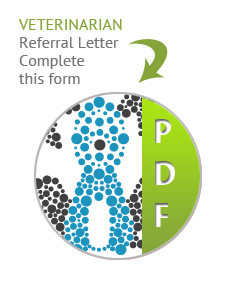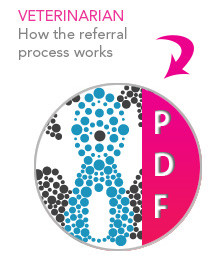Hymenoptera (Bee) Hypersensitivity
Reactions to bee stings can be divided into 5 general groups. Some reactions are toxic (direct irritation) and some are allergic in nature.
Group 1
Small local reaction (redness and swelling at sting site) – this is normal
Group 2
Large local reaction which may involve a whole limb or the whole head/face – allergic, and dangerous if the airway is obstructed
Group 3
Immediate systemic allergic reaction
– this can be mild (not life threatening) with hives/lethargy or
– severe & life threatening (heart/breathing problems, collapse, vomiting and diarrhoea/urination, salivation, itching, pale gums & death possible within minutes)
Group 4
Delayed systemic allergic reaction (after a few days the animal develops signs including rash, joint pain and fever)
Group 5
Systemic toxic reaction due to massive envenomation with hundreds of stings – this can also be life threatening.
The bee & the wasp
Bees are herbivores and are attracted by flowers and fragrances. Their sting may be left in the skin and should be removed if it is seen. The bee dies after it stings so can only sting once. Wasps are carnivores and are attracted by meat, rotting fruit, rubbish and soft drinks. Their sting is not left in the skin and they can sting multiple times. Clues as to whether the sting came from a wasp or bee are if the insect is seen it may be identified, whether there is a stinger present and whether there was food/soft drink/rubbish around when the dog or cat was stung.
Predicting future reactions
Usually the type of reaction that occurred with the first sting is the same as subsequent reactions, i.e. if there was a large local reaction, and the pet is re-stung, the most likely reaction will be another large local reaction. If there was a life threatening reaction, this is likely to happen again. There is a lesser likelihood that there will be no reaction on a subsequent sting or a more serious reaction. Only 3-10% of humans with a large local reaction go on to have a more serious systemic reaction on subsequent stings.
What if my pet is stung by a bee?
You should always take your pet to the vet clinic if you suspect a bee sting, as anaphylactic reactions can occur within minutes and prompt treatment can be lifesaving. The treatment given will depend on the reaction to the sting. Local reactions, whether small or large, can be treated at the vet clinic with ice, pain relief and if necessary, anti-histamines and corticosteroids. Systemic reactions may need to be treated with adrenaline and fluid therapy. If a systemic (life threatening) reaction is going to occur, it will usually occur within 30 minutes. If there has been no reaction within this time, it is unlikely to occur.
Can I prevent my dog getting bitten by bees?
It is a good idea to remove plants that attract bees from the garden, and not to wash the dog in strongly scented shampoos. If the suspect is a wasp, do not leave out uncovered food and make sure rubbish bins are tightly sealed.
Bee stings and the EpiPen
If your pet has had an anaphylactic life threatening reaction, treatment options include purchasing a Junior EpiPen from the chemist, which should only be used after discussion with us or your vet, and should only be used in an emergency i.e. there are clear signs of another life threatening reaction developing after a sting. Use of an EpiPen should always be followed with a visit to the closest veterinarian. Bring the EpiPen so that the vet can see what was used.
Prevention measures
In the future we hope to offer testing for bee hypersensitivity, which involves spending a day in the clinic. If a positive reaction is seen, we are able to do a desensitisation protocol similar to that done in bee allergic people. The advantage of this is that (after the build-up) your pet is better protected whether you are home or not. With an EpiPen you must witness the sting to be able to take action. In human adults immunotherapy (desensitisation) reduces the risk of a repeat reaction to a sting from 60% to 3% and is considered a very effective form of treatment for hypersensitivity.








